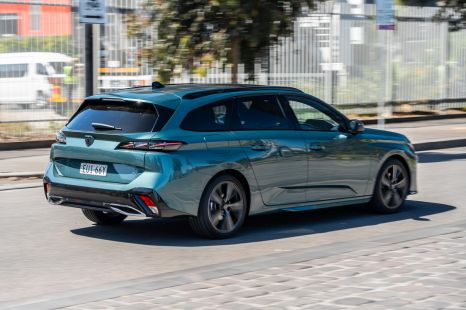

Jack Quick
Peugeot won't follow VW, Mercedes-Benz in axing wagons
2 Years Ago
The new Peugeot 308 is finally here, giving the brand’s local division a rival to the Volkswagen Golf after 18 months without one.
It’s a big deal for Peugeot worldwide. The new 308 wears the brand’s latest design language and debuts its new logo, a shield-shaped emblem harking back to a logo used in the 1960s.
The ‘300 Series’ is also one of Peugeot’s longest-running nameplates, dating back to 1932 with more than 15 million units produced since the first iteration. The 308 itself is now in its third generation.
Peugeot has made it very clear it’s aiming upmarket. Think of it as a French alternative to Volkswagen, offering a somewhat attainable premium product.
Quickly see how this car stacks up against its competition. Select any benchmark to see more details.
Where expert car reviews meet expert car buying – CarExpert gives you trusted advice, personalised service and real savings on your next new car.
| Configuration | Price From* |
|---|---|
| 1.2L, 8-speed auto, 5-door Hatchback, Petrol, FWD | $43,990 |
| Configuration | Price From* |
|---|---|
| 1.2L, 8-speed auto, 5-door Hatchback, Petrol, FWD | $48,990 |
| 1.2L, 8-speed auto, 5-door Station Wagon, Petrol, FWD | $50,490 |
| Configuration | Price From* |
|---|---|
| 1.6L, 8-speed auto, 5-door Hatchback, Electric, FWD | $64,990 |
Where expert car reviews meet expert car buying – CarExpert gives you trusted advice, personalised service and real savings on your next new car.
See our comprehensive details for the Peugeot 308
There is 412L of boot space available in the 308 Hatch and 608L in the 308 Wagon.
Fold the rear seats and that expands to 1295-1323L in the Hatch, and 1634L in the wagon. The GT Premium Hatch quotes a little less due to the subwoofer, which eats into the underfloor area – it has 384-1295L.
The 308 Wagon also offers a 40:20:40 split rear bench for added practicality when stowing longer items. The 308 Hatch retains a 60:40 split.
Where expert car reviews meet expert car buying – CarExpert gives you trusted advice, personalised service and real savings on your next new car.
CarExpert High Resolution Photos of the Peugeot 308
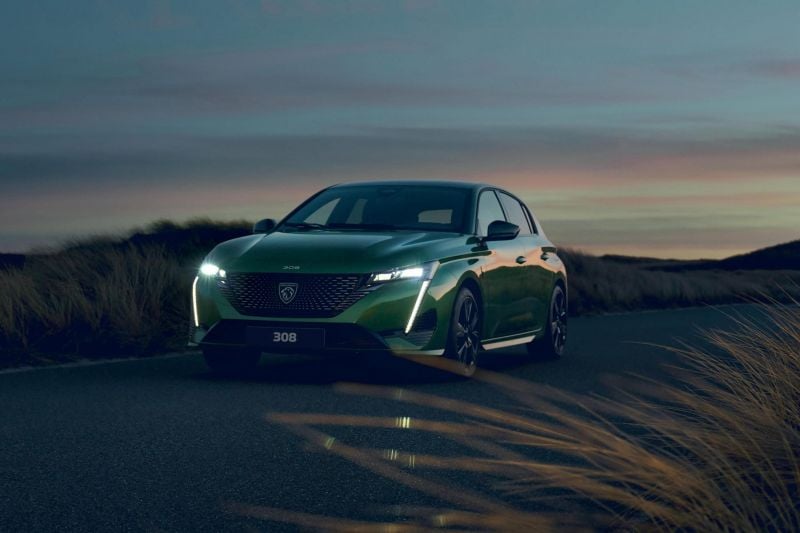
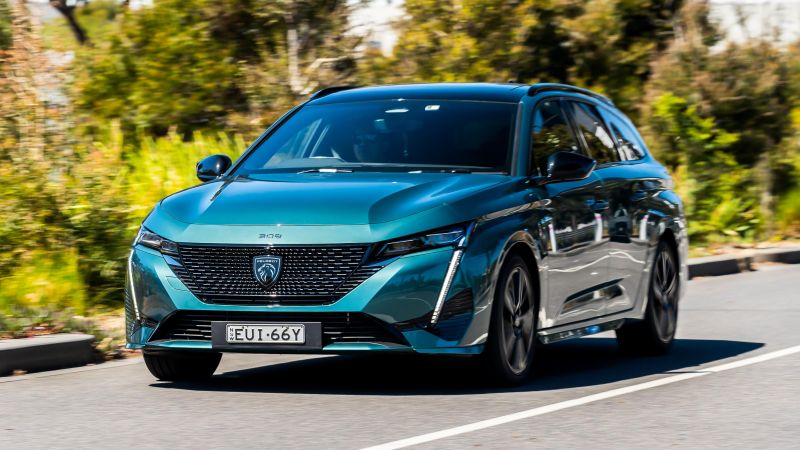
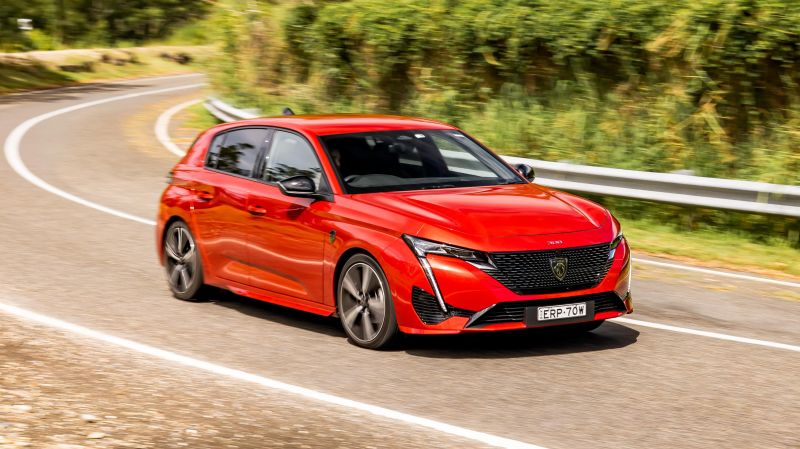
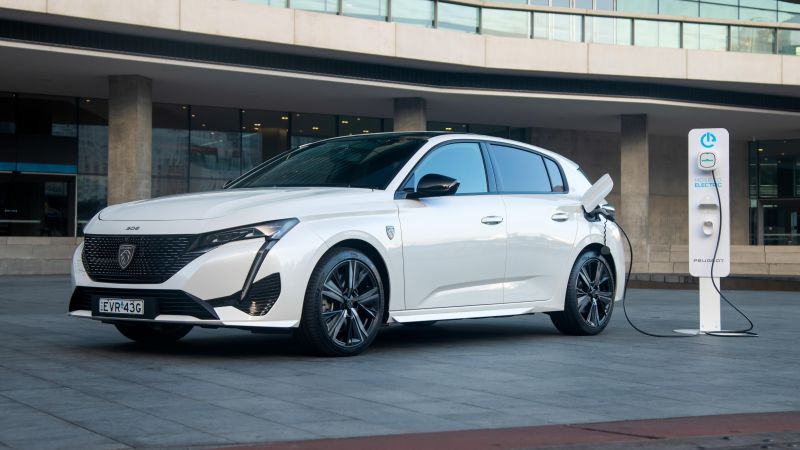
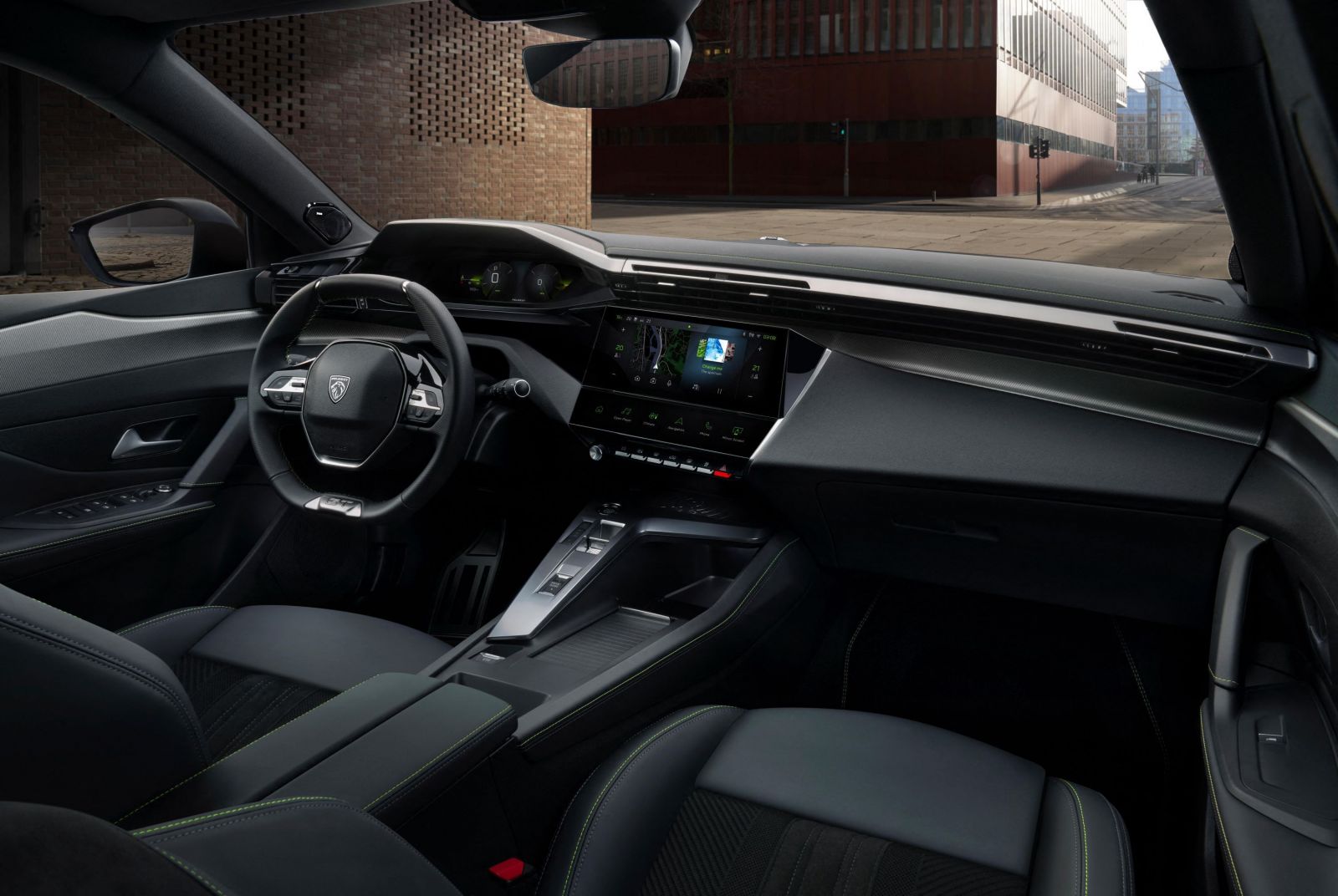
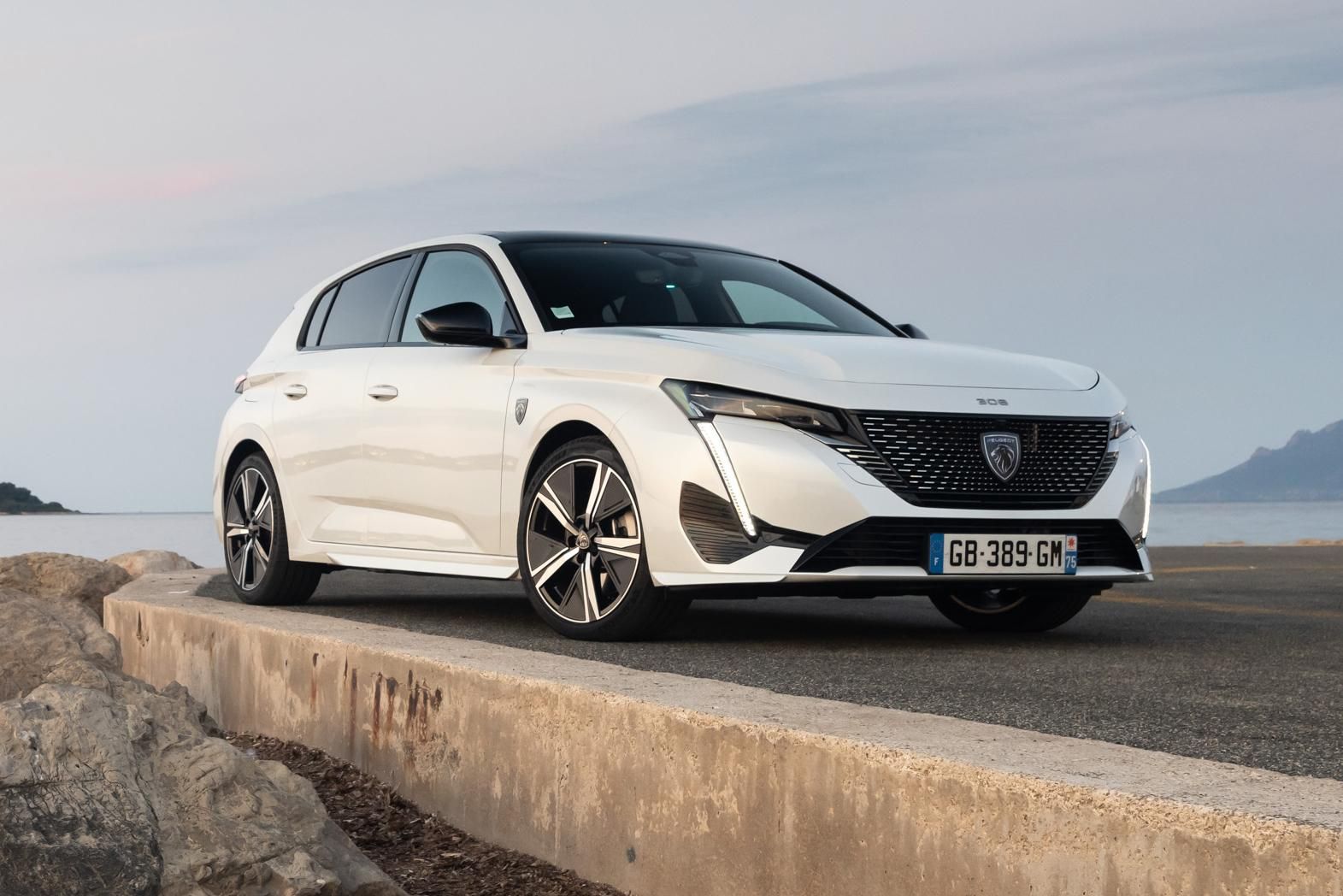
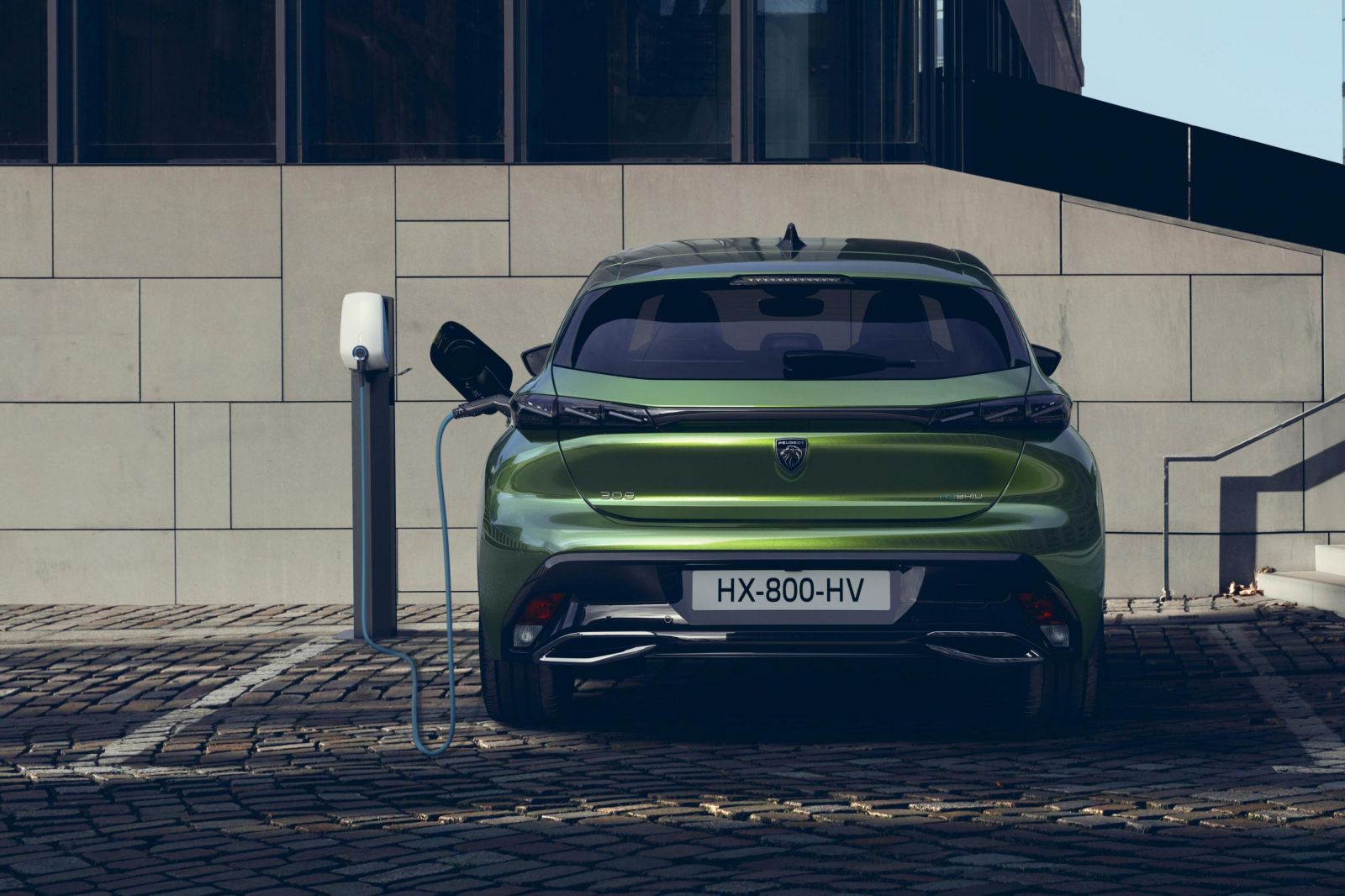
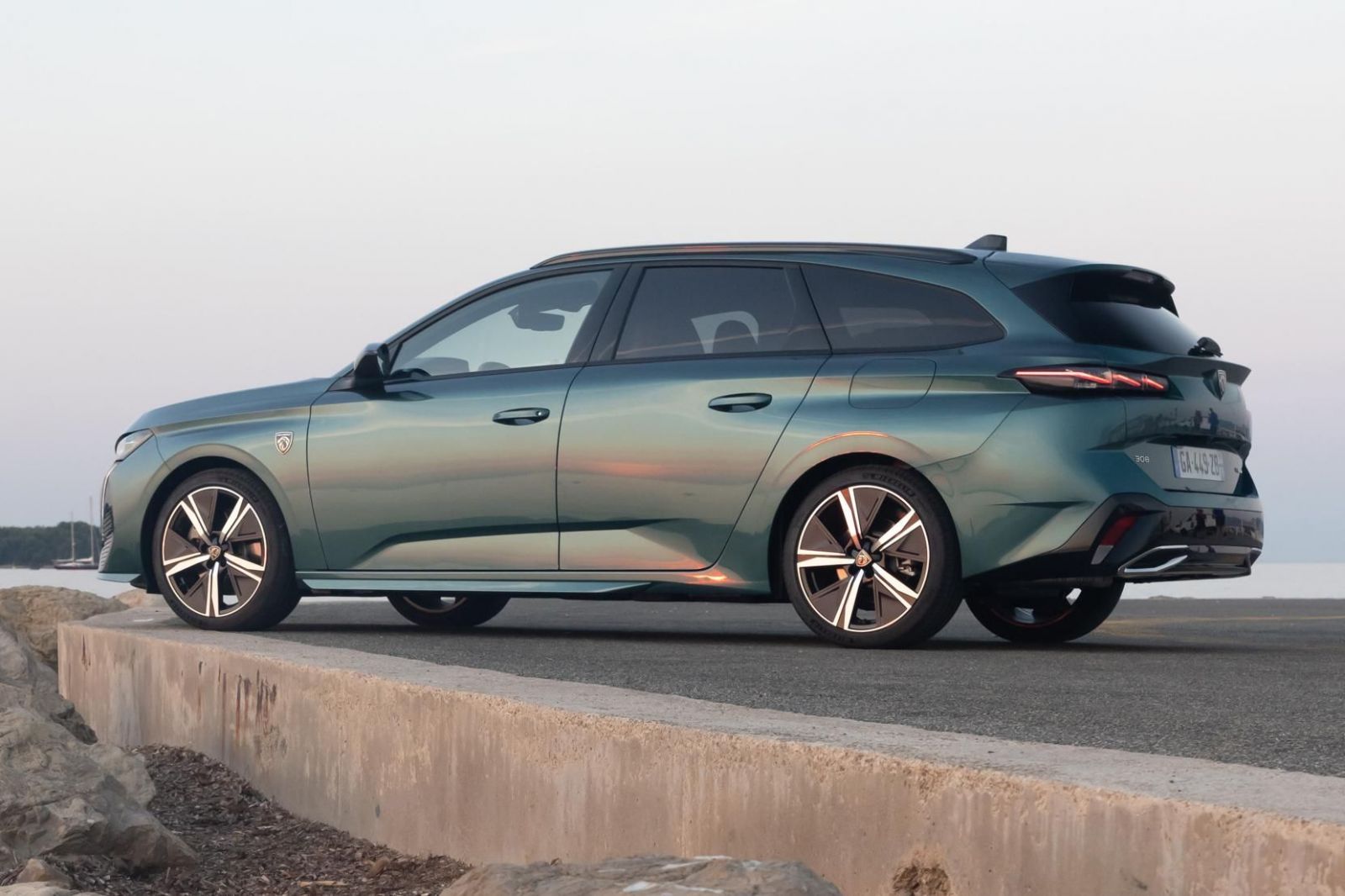
View 13 images
The new 308 wears the brand’s latest design language and debuts its new logo, a shield-shaped emblem harking back to a logo used in the 1960s.
Where we’ve seen a lot of the European manufacturers making obvious cuts to their cabin quality, Peugeot continues to improve its cabins in a bid to reiterate its premium positioning.
It’s the nicest small car interior this side of a BMW 1 Series or Mazda 3, and has a distinctly French flavour thanks to the latest take on Peugeot’s i-Cockpit, which has the instrument cluster raised and the steering wheel shrunken to keep the cluster in the driver’s line of sight.
Even the base GT comes with a lovely mix of materials and textures, with the standard sports seats finished with suede inserts and leather bolsters, smooth leather on the steering wheel and contrast stitching throughout – including green thread to match the Olivine Green exterior paint option.
The driver’s seat is manually adjustable in the GT, but the GT Premium gets full electric adjustment with memory settings, as well as lovely Nappa leather upholstery with contrast green stitching. It really is quite nice and feels properly upmarket in both specifications.
There’s a good range of adjustment, and the sporty seats hug you tight without it getting weird. While you’re cocooned by the wraparound cockpit, you won’t feel claustrophobic behind the wheel or in the passenger seat. I also love that you can extend the lower cushion, something usually reserved for luxury brands.
Peugeot was quick to stress the customisation on offer, including multi-colour ambient lighting and themes via the infotainment system, configurable menus for the touchscreen, as well as the configurable touch panel below the display dubbed i-Toggles.
They allow you to set shortcuts such as climate controls, navigation, or smartphone mirroring.
It feels a lot more polished than the previous 308’s laggy and low-res infotainment, and with more time to play around with the settings, I’m sure it’d be very easy to set and forget for ease of daily use. You can also set driver profiles linked to your phone, so you don’t have to re-configure everything for a second driver.
Peugeot’s local team confirmed it’s working on bringing additional app-based functions like remote engine start and cabin pre-conditioning, much like we’ve seen from other brands, but they won’t be available from launch while the company’s Australian team works through the approval process with local regulations.
Wireless Apple CarPlay worked flawlessly for us between multiple vehicles, and quality from the GT Premium Hatch’s 10-speaker Focal Hi-Fi system with 690-watt amplifier was crisp. The 3D instrument cluster can be a little trippy, but you can make it 2D with a quick tap in the touchscreen.
All versions come with a 10-inch 3D digital instrument cluster ahead of the driver, as well as a 10-inch HD connected navigation system running a suite of connected services, as well as wireless Apple CarPlay and Android Auto.
It’s running the latest Peugeot-Citroen interface, which has a different skin to the system in the new Citroen C5 X but is essentially the same architecture.
The high-resolution display and faster hardware is a major step up from previous-generation Peugeot products – essentially the rest of the existing range – and there’s a three-year subscription to various online services.
Currently enabled net-based features include online navigation with live traffic routing and updates, wireless car park information and fuel prices (refreshed daily), as well as web map search and speed camera alerts. The system supports wireless updates, including monthly wireless map updates from map provider TomTom.
ANCAP has yet to assess the Peugeot 308, however its Euro NCAP counterpart awarded it four stars. This was based on an adult occupant protection rating of 76 per cent, a child occupant protection rating of 84 per cent, a vulnerable road user protection rating of 68 per cent, and a safety assist rating of 65 per cent.
It’s unclear whether ANCAP will apply the same four-star rating. It has harmonised its testing protocols with Euro NCAP, however the specification of the tested 308 in Europe may differ from local models.
Standard safety equipment includes:
The GT Premium also receives active lane positioning and a surround-view camera.
| Peugeot 308 | Fuel Type | Combined |
|---|---|---|
| 1.2L, 8-speed auto, 5-door Hatchback, Petrol, FWD | Premium Unleaded | 5.3 L/100km |
What are the running and servicing costs of a Peugeot 308?
If ongoing costs have been a barrier to you owning a French brand, Peugeot has recently introduced very competitive service packages – $1000 for three years, and $1800 for five.
Compared to paying as you go, that represents a saving of up to $689. It also makes the Peugeot 308 quite competitive against rival makes. Service pricing details for the 308 GT Sport Plug-in Hybrid will be announced closer to its launch next year.
Our expert take on Peugeot 308 drivability.
The three-cylinder petrol engine won’t set your pulse racing. There’s good low-down response and a thrummy, characterful engine note under acceleration, but it doesn’t quite live up to the GT branding.
Peugeot’s 0-100 claim of 9.7 seconds will no doubt draw criticism in the comments section, but like a lot of modern turbocharged engines and low-output EVs designed for predominantly city use, it gets up to 60km/h with more than enough pace for the average buyer.
With that said, the 308 is a GT in the way it effortlessly cruises along, with a cabin that’s well insulated for the segment, pliant and balanced ride, as well as linear, accurate driver controls.
It’s also more than capable of sitting at 110km/h for extended periods of time, particularly in GT Premium models fitted with Lane Positioning Assist that, combined with the adaptive cruise control, facilitates Level 2 semi-autonomous driving.
Even under harder throttle the turbo triple is hardly thrashy or too loud, though some may find its gravelly tone unrefined compared to a more powerful four-cylinder engine. It sort of performs like a diesel, without the clatter.
The eight-speed automatic is one of the better shifters in the Peugeot-Citroen catalogue, and unlike the Citroen C5 X is decisive at low speeds. Even when flicked to ‘manual’ using Sport mode, it’s responsive to inputs from the paddles.
Combine this with a taut, enthusiastic chassis, and you have the basis of a fun little car. If only there was a more powerful version of the 1.2-litre turbo available – perhaps the 114kW/240Nm tune from the related 2008 SUV would suffice, but alas the 308 doesn’t seem to offer this spec anywhere.
This will be somewhat addressed by the 165kW/360Nm 1.6-litre PHEV next year with its brisk 7.5-second 0-100 claim, though that’s certain to come with a hefty price jump, and the added weight of the lithium-ion battery may blunt the sharp handling. We won’t know for sure until it lands in the first half of next year.
I enjoyed some of the twistier sections of our test route, which took us up Saddleback Mountain in some parts. In these tighter, technical sections of road, the 308 was particularly well equipped for some fun.
The lack of grunt is less of an issue given you’re rarely reaching the speed limits here, low-speed corners allow you to make the most of that small steering wheel with quick ratio, and you can enjoy the hunkered down, eager dynamics.
What colours are available for the Peugeot 308
Olivine Green is the standard colour on hatchback models, while Avatar Blue is standard on the wagon.
The following metallic finishes are a $690 option:
The following premium metallic finishes are a $1050 option:
Like the wider Peugeot passenger line-up, the 308 range is covered by a five-year, unlimited-kilometre warranty. Scheduled maintenance is required every 12 months or 15,000 kilometres – whatever comes first.
Is this the right car for you? Out experts buy or not guide.
The premium pricing, particularly for the entry-level 308 GT, is dear against competitors that offer more features from the base level. It’s also likely to get a four-star safety rating from ANCAP unless there are drastic changes to the local specification.
For many buyers the three-cylinder petrol engine’s outputs also won’t cut it, and the Peugeot badge doesn’t have the same allure as Audi’s four rings or the Mercedes-Benz three-pointed star to justify opting for what will be perceived as an entry-level powertrain despite its merits. The quirky i-Cockpit design may also prove to be a turn off.
But if you’re looking for something a little nice, different, unusual even, the Peugeot 308 is a lovely little thing. Also, for all my readers with good taste, the 308 Hatch’s Olivine Green no-cost hero is irresistible.
Where expert car reviews meet expert car buying – CarExpert gives you trusted advice, personalised service and real savings on your next new car.
The cheapest Peugeot 308 is the GT Line that starts from $43,990.
The most expensive Peugeot 308 is the GT Sport that starts from $64,990.
The best towing capacity of a Peugeot 308 is offered by the GT Sport which can tow 1500 kg
The largest Peugeot 308 is the GT Premium which measures 1852mm wide, 4365mm in length and sits 1475mm tall.
The most powerful Peugeot 308 is the GT Sport which has 132kW of power from its 1.6L TURBO GASOLINE DIRECT INJECTION & MULTI-POINT engine.
The Peugeot 308 is built in France and shipped to Australia.
The heaviest Peugeot 308 is the GT Sport which weighs 2120 kg (kerb weight).
The Peugeot 308 may use different fuel/energy types based on the variant which includes electric, unleaded or premium unleaded.